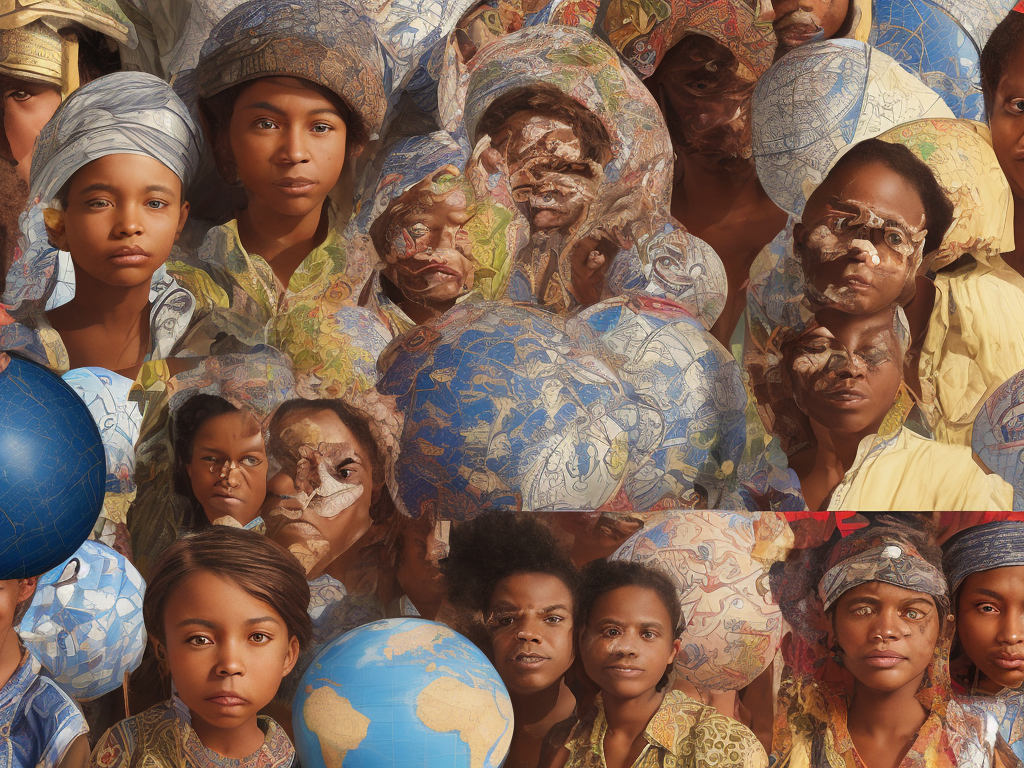
The terms “ethnicity” and “race” are often used interchangeably and are often confused with one another. However, there is an important distinction between these two concepts that is not always clear. Understanding the difference between ethnicity and race is crucial for addressing issues of social justice and promoting diversity and inclusivity.
Race is a social construct that categorizes people based on physical characteristics such as skin color, hair texture, and facial features. Historically, race has been used as a means of establishing and maintaining power dynamics, with certain groups being deemed superior or inferior based on their race. In some cases, this has led to discrimination, prejudice, and even genocide. Despite the fact that race is a social construct and not based in biology or genetics, it continues to play a powerful role in shaping individual and collective identity.
Ethnicity, on the other hand, refers to a shared cultural identity that may include common ancestry, language, customs, and beliefs. Ethnicity is not necessarily tied to physical characteristics or biology, but rather is a product of social and cultural factors. Ethnicity can be fluid and can change over time as individuals and groups move between cultures or adopt new cultural practices. Unlike race, ethnicity is not inherently hierarchical and does not imply a superior or inferior status.
To further illustrate the difference between race and ethnicity, consider the following examples. A person who is biologically classified as “white” may identify ethnically as Italian, Irish, or Polish. Similarly, someone who is classified as “Asian” may identify ethnically as Chinese, Japanese, or Korean. These examples demonstrate how race and ethnicity are distinct concepts that are not necessarily linked to one other.
One of the consequences of conflating race and ethnicity is the erasure and marginalization of diverse ethnic groups. For instance, Asian Americans are often viewed as a monolithic group in which cultural distinctions are overlooked in favor of racial categorization. Similarly, Latinos and Hispanics are often lumped together as a single ethnic group despite the fact that they may have different nationalities, languages, and cultural traditions. This erasure can lead to a lack of representation and resources for these groups, as well as an inability to address the unique challenges they face.
Another consequence of conflating race and ethnicity is the perpetuation of harmful stereotypes and assumptions. For example, labeling all Black people as “African American” erases the experiences of individuals who may not have African ancestry, such as Black immigrants or biracial individuals. Similarly, assuming that all Latinos are recent immigrants who do not speak English reinforces negative ideas about immigration and language barriers. By recognizing and valuing the diversity of ethnic groups, we can challenge these harmful assumptions and promote a more inclusive society.
It is important to note, however, that race and ethnicity are not completely distinct from one another. People of certain races may have shared cultural practices and histories that are tied to their racial identity, such as the experiences of African Americans under slavery and segregation. Similarly, some ethnic groups may have physical traits that are commonly associated with a particular race, such as the curly hair and dark eyes often attributed to people of Middle Eastern descent. This overlap between race and ethnicity is complex and varies across different contexts and cultures.
Despite this complexity, it is important to distinguish between race and ethnicity in order to recognize and value the diversity of human experience. By understanding the unique aspects of different ethnic groups, we can celebrate the richness of cultural heritage and promote cross-cultural understanding. By challenging the constructs of race that have been used to oppress and marginalize certain groups, we can work towards a more equitable and inclusive society for all.
 Self-Instruct
Self-Instruct